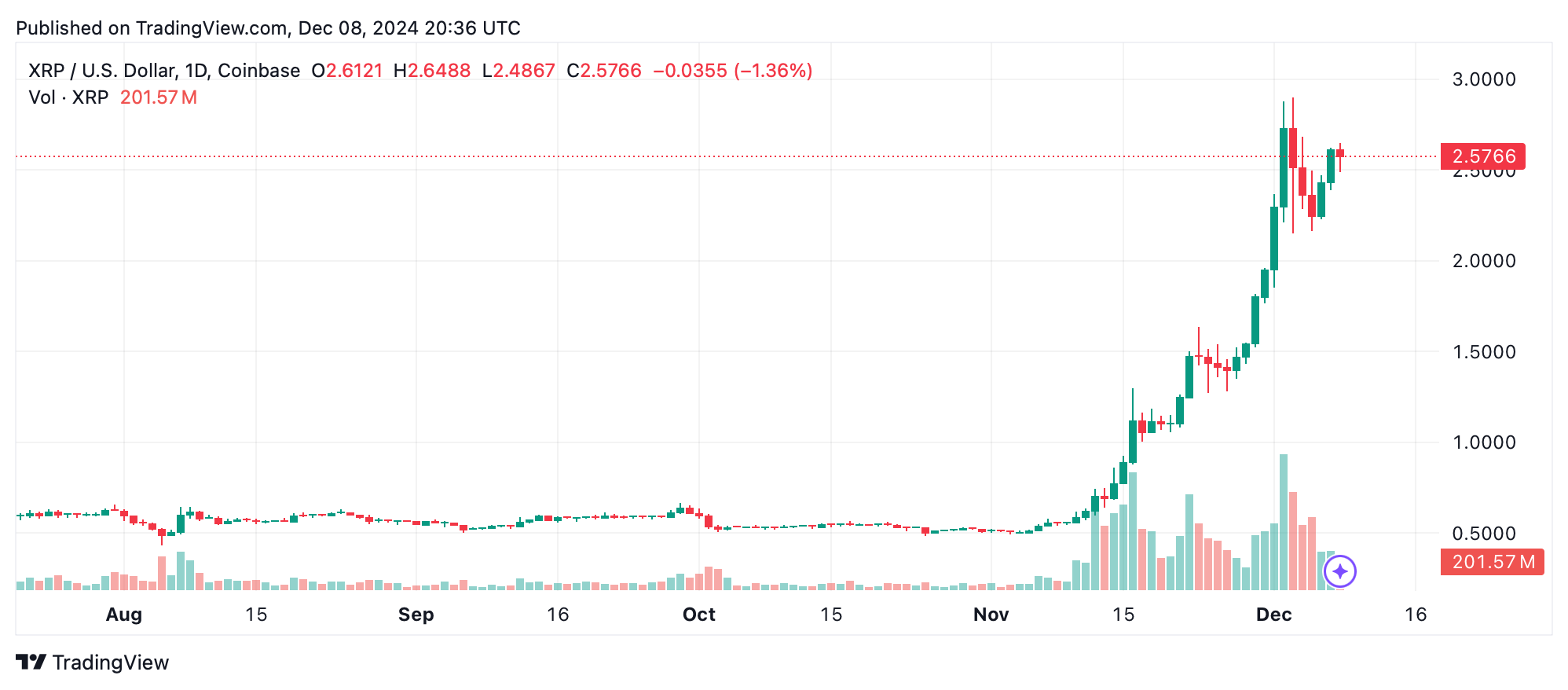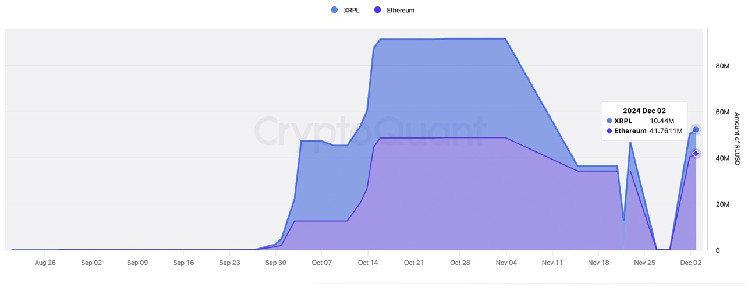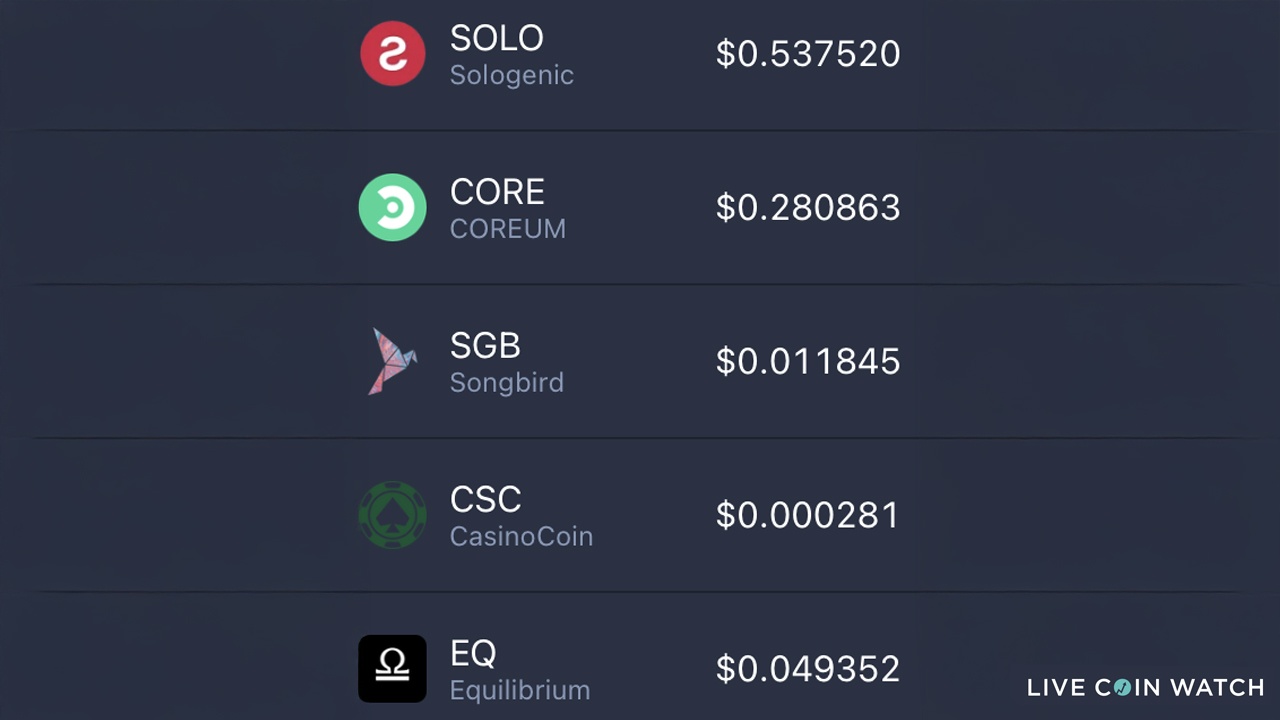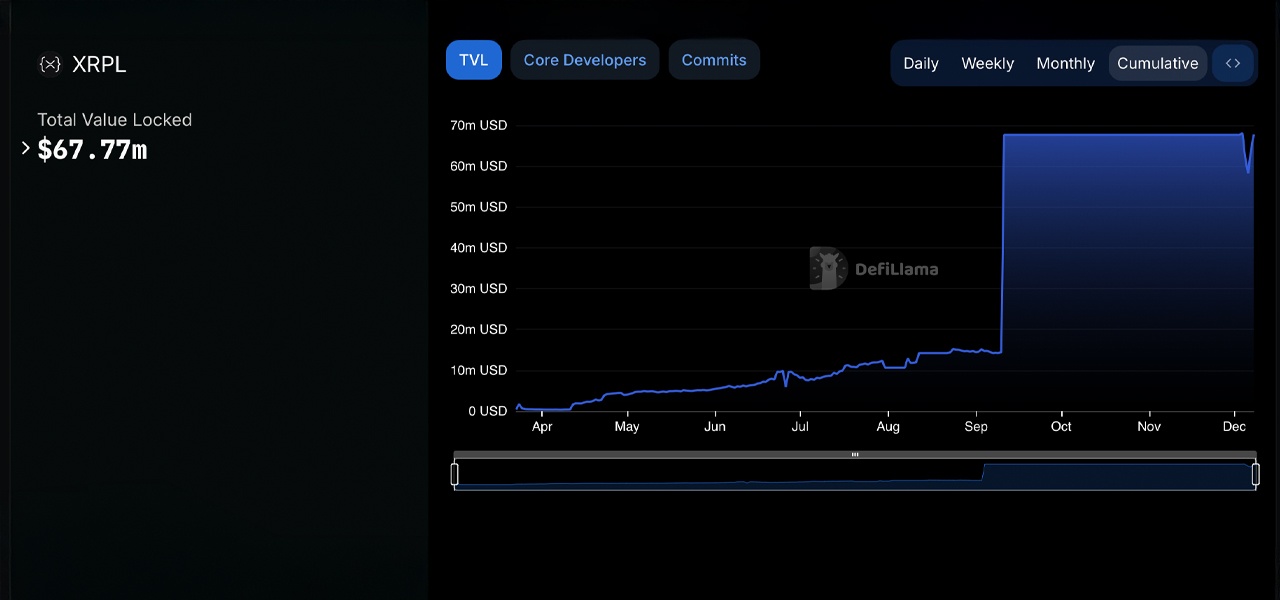XRP, with a market cap of $149 billion, isn’t just a heavyweight in cryptocurrency—its distributed ledger network has been diving headfirst into tokenization and decentralized finance (defi). Meanwhile, Ripple is turning heads with the forthcoming launch of its much-anticipated stablecoin, ripple usd (RLUSD).
A Focus on RLUSD and Defi Marks Strategic Shift for XRP Ledger
The crypto asset XRP has been riding a wave of growth, driven in part by speculation that regulatory hurdles could ease under the Trump administration, with Paul Atkins at the helm of the U.S. Securities and Exchange Commission (SEC). Adding to the excitement, the network’s move into tokenization and the buzz around its upcoming stablecoin, ripple usd (RLUSD), are further fueling the upward trend in XRP’s value.

Recently, Bitcoin.com News reported on Ripple Labs preparing to launch RLUSD, with Chief Technology Officer David Schwartz shedding light on the stablecoin during The Block’s Emergence conference. Onchain data from cryptoquant.com indicates that between Oct. 15 and Nov. 3, 2024, a total of 91.6 million RLUSD was issued across Ethereum and XRPL chains. Both chains experienced a supply reduction, and by Nov. 26, Ripple had scaled down testing to fewer than 210 RLUSD.

These supply levels remained confined to internal testing and were not accessible to the public. However, after Nov. 28, supplies across both networks began to climb. By Dec. 2, according to Cryptoquant stats, the XRPL chain held 10.44 million RLUSD, while Ethereum accounted for 41.761 million, bringing the combined total to 52.201 million RLUSD. Meanwhile, the XRP Ledger has been making waves in decentralized finance (defi) and tokenization, fueled by the meme coin trend highlighted by Bitcoin.com News last week.
Livecoinwatch.com lists over 200 tokens with active markets issued on the XRP Ledger. Leading the pack is Sologenic (SOLO), which boasts a $220 million market cap. Sologenic is a blockchain-based platform enabling the tokenization of assets such as stocks and commodities, with its native token, SOLO, trading at $0.55 this weekend. Other notable XRPL tokens include CORE, SGB, CSC, and EQ, rounding out the top five.

Despite the array of tokens, many listed on livecoinwatch.com show dormant markets, no market caps, and zero liquidity. Even SOLO and other leading XRPL tokens face extremely thin liquidity. On defillama.com, XRPL’s defi activity appears limited, driven by the XRPL Dex and Openeden T-Bills. Metrics report $67.77 million in total value locked, all attributed to the XRPL Dex, as RWA metrics are excluded. Openeden T-Bills, a real-world asset project, holds $5.05 million, according to the same data.

XRP’s trajectory reflects a calculated dive into fresh opportunities, bolstered by the potential regulatory shifts under the incoming Trump administration. Ripple’s push into defi and tokenization reveals its aim to expand beyond speculative meme coin token trading, though the ultimate payoff in this sector remains uncertain. The measured rollout of RLUSD showcases a methodical approach, positioning Ripple as a potential influencer in the wider financial realm of stablecoins.
Despite its impressive market cap, XRP faces challenges tied to the liquidity of its issued tokens and the ledger’s relatively modest defi activity—areas ripe for improvement. Advancing this will require building out additional infrastructure. For its loyal supporters, often called the ‘Ripple Army,’ Ripple’s bold moves, from RLUSD to asset tokenization, represent a forward-thinking vision. The project’s critics, on the other hand, oppose it at every turn. As the crypto space evolves, the XRP Ledger’s exploration of decentralized finance and real-world use cases may define its future relevance in an ever-tightening market.
 news.bitcoin.com
news.bitcoin.com
